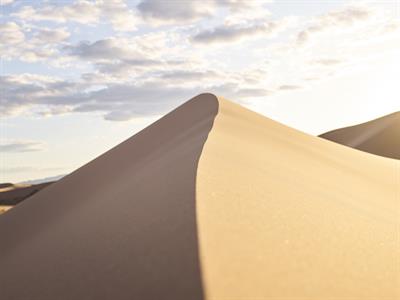
PUMPA - SMART LEARNING
எங்கள் ஆசிரியர்களுடன் 1-ஆன்-1 ஆலோசனை நேரத்தைப் பெறுங்கள். டாப்பர் ஆவதற்கு நாங்கள் பயிற்சி அளிப்போம்
Book Free Demo Some deserts are almost totally without water. In such places, strong winds blow raising heaps of sand and depositing them as mounds. These are called ‘sand dunes’ that shift and move endlessly across the desert. Few plants can survive on such dry, shifting sands.
Though there are deserts with water resources, some of them are dry and waterless. Generally, deserts receive less than 25 centimetres (\(10\) inches) of precipitation per year on average, but some deserts receive very little rainfall. The Atacama desert is one of the driest deserts that receives only around 1.5 cm (0.06 inches) a year. As a result, water resources do not occur, and rainfall fails in these deserts. When strong winds blow, it creates sand deposits; when sand rises, it settles as hillocks.
In short, a dune is a wind or water-built hillmade of dry or wet soil. The wind raises or moves sand from one location to another as it blows. When the wind stops blowing, it collects in a single area, forming hill-like structures. These are called Sand dunes which are found in deserts.

Sand dunes
One can see sand dunes in deserts, beaches, and even eroded and empty farm fields in semi-arid regions where loose sand is windblown. Only a few plants can survive in such dusty, shifting sands.
Meaning of difficult words:
S.No | Words | Meaning |
1. | Spring | A natural flow of groundwater |
2. | Hillock | A small hill |
3. | Arid | A dry place without much plants |
4. | Dune | A hill of sand on a desert or beach |
5. | Heap | A large pile of something |
6. | Survive | To continue to live in a dangerous or difficult situation |
Reference:
National Council of Educational Research and Training (2006). Honeysuckle. The Desert (pp.15-18). Published at the Publication Division by the Secretary, National Council of Educational Research and Training, Sri Aurobindo Marg, New Delhi.